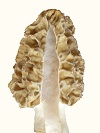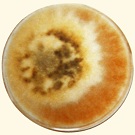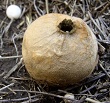 |
|
Science Home

|
Extreme evolution has been transforming a single-celled yeast into a multi-celled mushroom, the morel, over the past 50 thousand years.
Phenotypic variation as an adaptation mechanism, which scientists did not understand, is extreme and highly visible with the morel. An anomaly produced by the morel shows physiological patterns which are stored and reused explaining much of the complexity of general physiology throughout biology. Photo Pages
An Anomaly of Morchella as a Tool for the Study of Differentiation Phenotypic Variation as an Adaptation Mechanism by Morchella Figures 1-2 - Pigmented Mycelium Figures 3-6 - Differentiation Figure 7 - Variations in Anomalies Figure 8 - Variations in Morphology The morel mushroom is in the process of evolving from a single-celled yeast into a multi-celled mushroom, which began in this ice age cycle, about 50 thousand years ago. University scientists claim the morel is an ancient cup fungus 129 million years old. They get everything wrong on the biology and evolution of the morel. They claim that a leaf mold (Costantinella cristata) is a conidial stage of the morel. Conidia are microscopic stalks with exposed spores on them—the most common way for molds to form spores—which evolved about 200-300 million years ago. The leaf mold was said to be found in great abundance on dead leaves in the forest. Morchella could not grow in that manner, because it does not tolerate exposure without dehydrating. Also, it is not a decay organism, as it would have to be to grow competitively on dead leaves. Morphological complexities were also uncharacteristic of Morchella including crosiers and rosettes in addition to conidia. University scientists also get the life cycle wrong. They assume the morel mushroom grows out of an underground spore mass called sclerotia. Sclerotia is a spore-like growth under the ground which carries the organism through summer heat and winter cold. The sclerotia stores nutrients, so little is lost as sclerotia constantly forms and regrows into mycelium. The problem with growing morels is that the mycelium excretes acid to kill bacteria and feed upon them as they autolyze. Under laboratory conditions, the acid accumulates and kills the mycelium. So the only way morels can be grown is to use a mutant that doesn't excrete acid. Graduate Research: Novak, G. E. 1981. Edotrophic sporulation by the yeast Nadsonia fulvescens. Can. J. Microbiol. 27: 967-970. |
|||||||||||||||||||||||||||||||||
 |
 | ||








